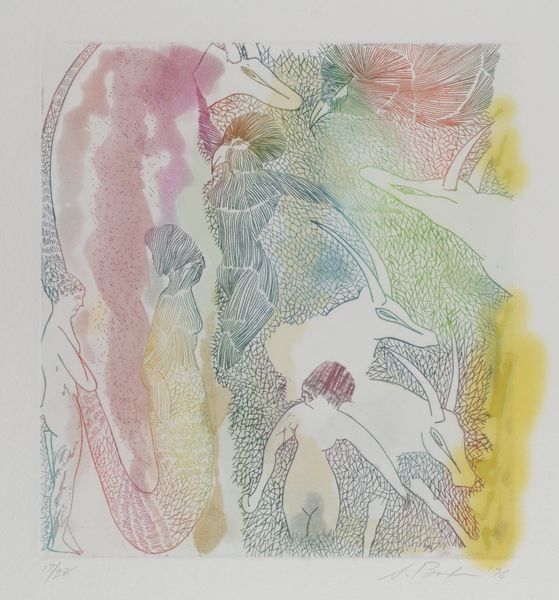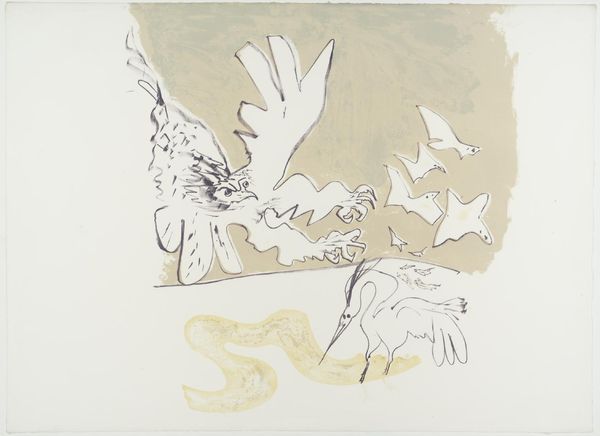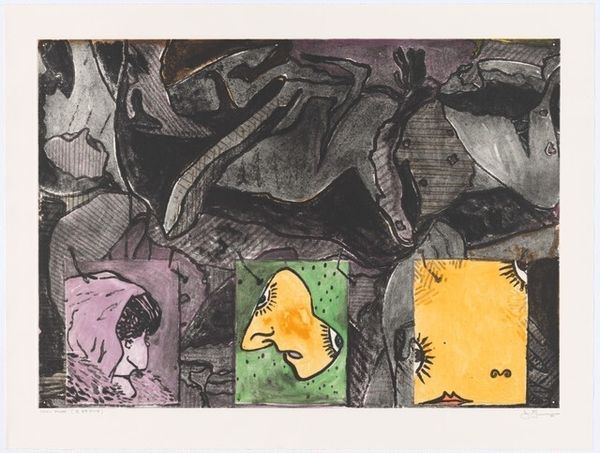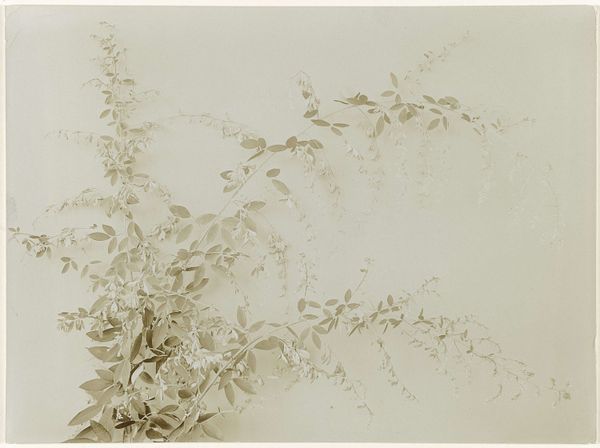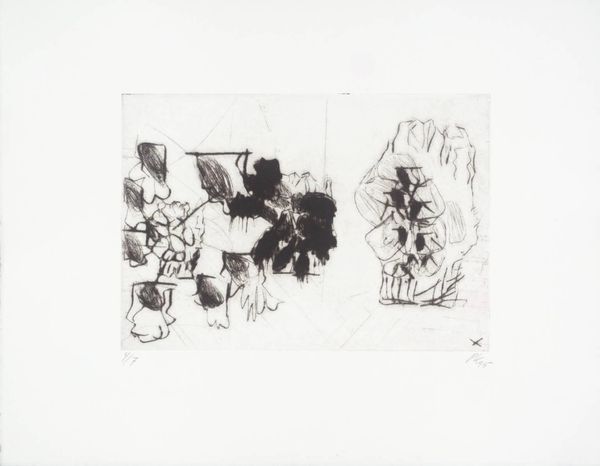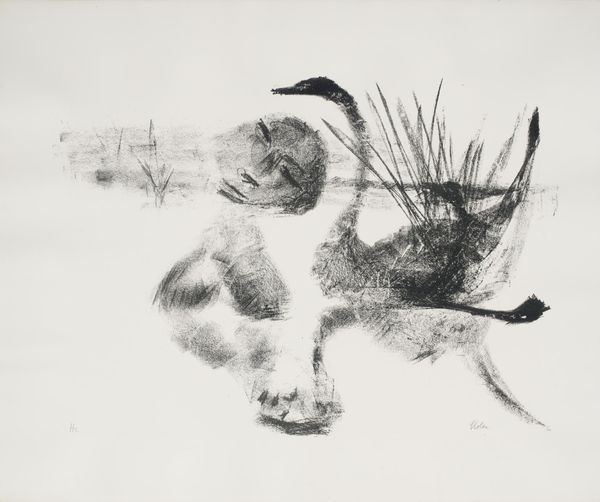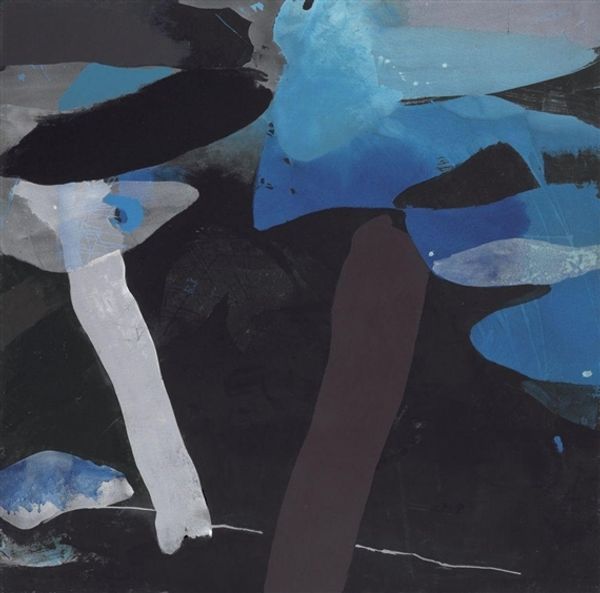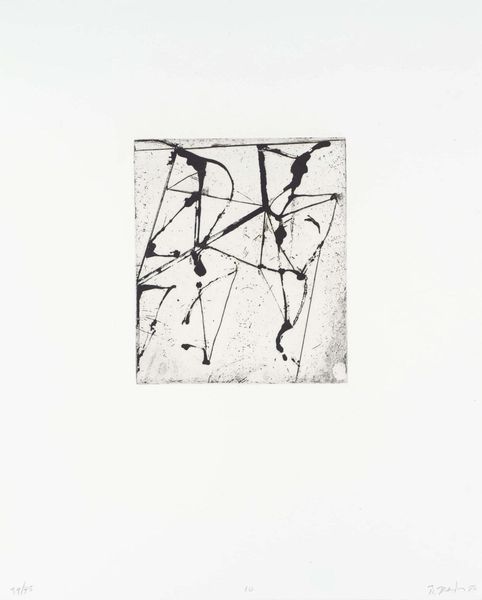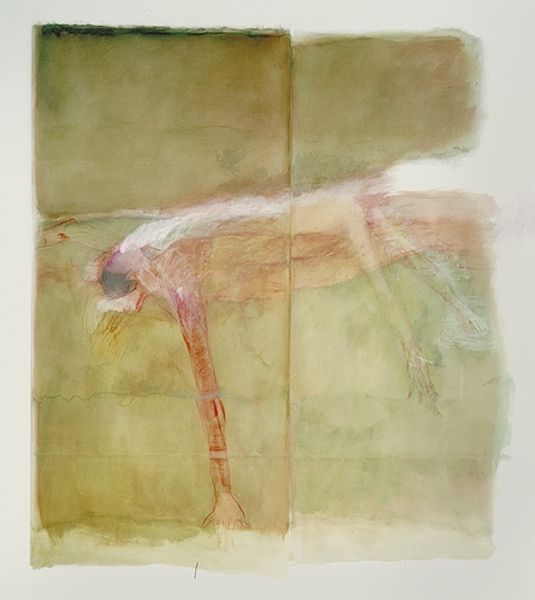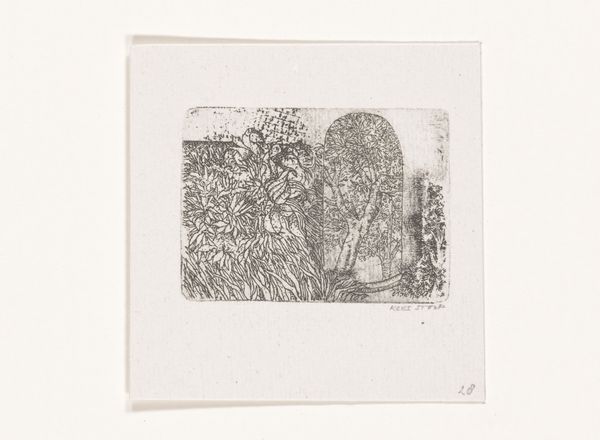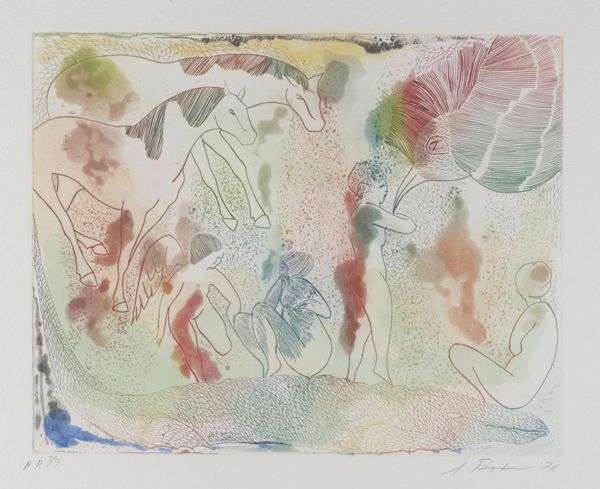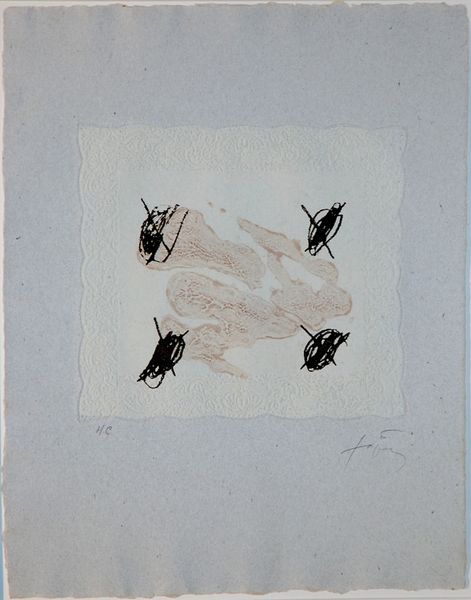
Dimensions: image: 553 x 590 mm
Copyright: © The estate of Stanley Boxer | CC-BY-NC-ND 4.0 DEED, Photo: Tate
Curator: Immediately, I'm struck by the layering and the delicate balance between representation and abstraction. Editor: Indeed. What we have here is "Jackass Free" by Stanley Boxer. There’s no date associated with the work in the Tate's records, but Boxer lived from 1926 to 2000. Curator: The materiality is fascinating. I'd be keen to know what processes were involved in its making. Editor: It seems like the materials are working together to give us a dreamlike vision. The image is built from these loosely etched animals. I'm curious about the labor involved, and how Boxer blurred lines between printmaking and more traditional forms. Curator: I agree. There is something very dreamlike and ethereal about the composition. The animals are familiar, yet rendered in such a way that they feel otherworldly. I think there is a strong visual tension to be found between its form and subject. Editor: Perhaps it’s this merging of visual motifs and techniques that makes “Jackass Free” so affecting, an example of art that challenges the hierarchies of artistic production. Curator: Ultimately, the formal elements are united to give the viewer a glimpse into Boxer’s creative vision. Editor: Right, and understanding how that vision was materially produced invites a deeper consideration of artistic value itself.
Comments
Join the conversation
Join millions of artists and users on Artera today and experience the ultimate creative platform.
tate 8 months ago
⋮
Stanley Boxer is best known for his paintings, large scale abstractions with a rich sculptural quality produced by thick, impasto brushwork. Born in New York, where he studied at the Art Students League, Boxer was championed for such work by American modernist critic Clement Greenberg (1906-1994), famous for his insistence that painters should eliminate subject matter in their work, aiming instead for the purity of abstraction. When considered in relation to his paintings, the prints Boxer produced at Tyler Graphics between 1975 and 1979 seem somewhat of an anomaly. Over this period, he created several series of intricately rendered figurative works, illustrating whimsical scenes featuring animals, plants and nubile winged figures. Boxer had, however, been making drawings of this nature throughout his career, and he insisted they were closely connected to his abstracts, made with similar gestures and motivation.

